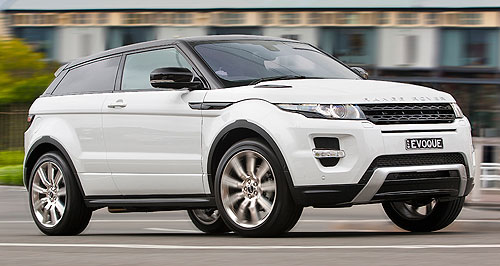News - Market Insight - Market Insight 2015Market insight: Japanese importers in box seatPrice point: The decline of the Australian dollar has raised cost pressures on imported car prices, but most companies are wearing it for now. Plummeting Aussie dollar has importers in bind, except those locked in Japanese yen12 Mar 2015 JAPANESE vehicle importers appear to have regained the whip hand on Australian car pricing as the crashing Aussie dollar (AUD) puts pressure on rivals buying stock in currencies of other countries, particularly the United States, Britain, South Korea and China. The Japanese yen has increased in value against the AUD by only 5.7 per cent in the past two years – a rise at least partly offset by a 5.0 per cent cut in Australian import tariffs due to the recent Japan-Australia free trade agreement. In the same period, the United States dollar and British pound have risen more than 25 per cent. Since the start of 2013, the AUD has slid from above $US1 parity to US75 cents, while the exchange rate with the pound has gone from about 70 UK pence to just 51 pence. The Chinese RMB and South Korean won are not far behind, appreciating against the AUD by 24.8 per cent and 22.9 per cent respectively. Due to the continuing weakness of the euro, European importers in Australia have endured a comparatively small swing of about 7.4 per cent over the past two years, while the Swedish krona is basically back where it started against the AUD. For many importers, the mining boom and resultant surge in AUD value a few years ago represented a golden opportunity to drop prices, ramp up model specification and massively increase market share, often at the expense of the Australian car industry. Now many of these importers are caught in the down-swing, with import cost pressures building almost by the day. For now, most are sitting on their hands, perhaps waiting for others to make the move. The weakness of the yen, however, is playing into the hands of the big Japanese importers who are holding or even reducing prices, placing many rivals in a pincer between unprofitability if prices do not rise and declining competitiveness if they do. The AUD-yen exchange rate is still at historically favourable levels, and has even improved on the position of a few years ago. Japanese-built vehicles account for more than a third of all sales in the annual one-million-plus Australian motor vehicle market – the biggest slice by far. The next biggest source is Thailand (226,936 units in 2014), but most of those vehicles are imported by the Japanese motor companies that have some control over the prices. For many Japanese companies, Thai imports muddy the currency issue, as the Thai baht has also escalated about 18 per cent against the AUD in two years. Some Japanese brands such as Honda import most of their volume models from Thailand, and most others, with the exception of Japan-centric Subaru, import at least a proportion of their line-up from the South-East Asian kingdom. However, currency arrangements of individual companies are shrouded in secrecy, with some Japanese brands potentially paying for Thai-built vehicles in yen via complex international exchange arrangements with head office in Japan. As well, some companies hedge currency, meaning the impact of rises and falls takes some time to flow through to the showroom. But one motor company executive whose products are traded in one of the most affected currencies told GoAuto: “The pressure is huge.” South Korean brands are among those mulling the situation, with the likes of Hyundai and Kia facing potential price rises that could impact their competitiveness with mainly Japanese rivals. As well, Holden imports many of its small and medium cars and SUVs from GM Korea, seemingly placing its competitiveness under strain. Immediate pressure was relieved in December by the South Korea-Australia free-trade agreement that, like the similar Japanese arrangement, lopped motor vehicle import tariffs, but plenty of exchange-rate movement is still in the pipeline. For the local car-makers and exporters, import price rises should be good news for locally built cars such as Holden’s Commodore, Ford’s Falcon and Territory and Toyota’s Camry and Aurion in their final years. However, it is all too late to reverse their decline, and it just remains to be seen which importers make the most of the situation by the end of 2018.  Read more |
Click to shareMarket Insight articlesResearch Market Insight Motor industry news |


















Facebook Twitter Instagram